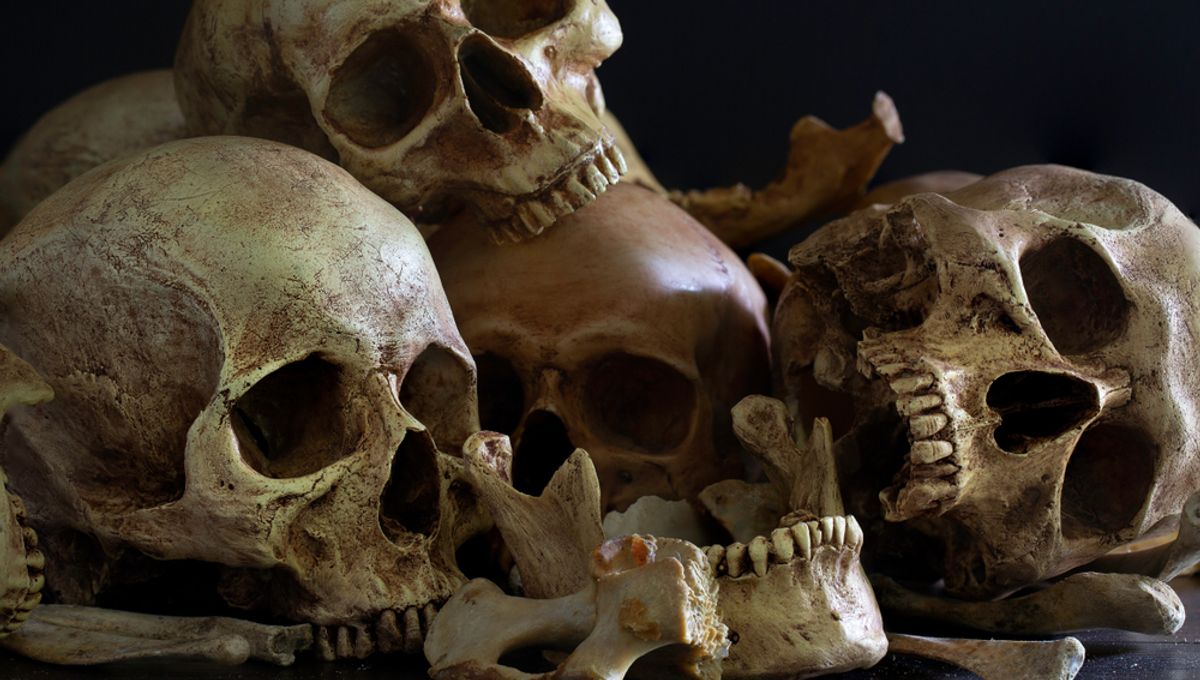
Buried at the back of a cave in southwest France lies what may be Europe’s first ever murder victim. According to a new analysis of the departed’s battered skull, the assassination was probably achieved with a blunt object such as a stone axe, and the target may have taken up to a month to die of their wounds.
First discovered in 1868, the Cro-Magnon rock shelter contains the remains of eight Homo sapiens individuals who are believed to have lived between 31,000 and 33,000 years ago. Alive and kicking during the mid-Upper Paleolithic, the four adults and four infants represent the earliest evidence of modern humans ever discovered in Europe.
Among the ancient bones found at the site is a skull featuring a suspicious-looking defect on the frontal bone. Previous analyses have reached contrasting conclusions as to how the cranium became damaged, with some scholars believing the injury was sustained prior to death while others interpret the insult as post-mortem wear-and-tear.
Now housed at the Muséum National d’Histoire Naturelle in Paris, the prehistoric pate has been partially glued back together along its fault lines, making it difficult for researchers to analyze the nature of these cracks. To overcome this, the authors of a new study used high-resolution computerized tomography (CT) scans to reconstruct a 3D model of the skull.
In doing so, they noticed that “the exposed fracture surfaces […] are smooth and undulating, like those associated with a perimortem fracture.” In other words, the skull was probably damaged shortly before its hapless owner bit the dust.
When comparing the injuries to those associated with cranial trauma from the pre-antibiotic era, the researchers began to build a clearer picture of how this unfortunate early individual expired. For example, they found that the porous fiber bone formation strongly resembled that seen in victims of head trauma during the American Civil War.
In such cases, soldiers typically survived for a short period before contracting meningitis, “probably from post-traumatic bacterial infection producing swelling beneath the meninges of the brain.”
“Death, preceded by delirium and a comatose state, sometimes with convulsions, resulted a month or a few weeks after the initial injury,” write the study authors. “A similar result and sequelae could be expected [at Cro-Magnon].”
This theory is further supported by the limited healing of the defect, indicating that the victim didn’t immediately perish but probably died within a month of sustaining the injury.
Noting that the wound occurred above the hat-brim line, the researchers conclude that it was more likely to have been caused by violent assault than by any accidental bump to the head. “The defect has the appearance of penetrating blunt-force trauma with an object having a blunt edge, not sharp like those of metal tools and weapons. In other words, it is more like a chop-mark, rather than an incision,” they say.
“Perhaps a stone axe could be suspected.”
Overall, these findings contribute to our understanding of early Homo sapiens violence, suggesting that deadly conflict was already a part of life when our ancestors arrived in Europe. In the case of Cro-Magnon, however, the absence of similar injuries in other individuals suggests that this particular scuffle was an isolated incident and not part of a mass killing.
The study is published in the Journal of Human Evolution.
Source Link: Europe’s Earliest Modern Humans May Have Smashed Each Other’s Skulls In